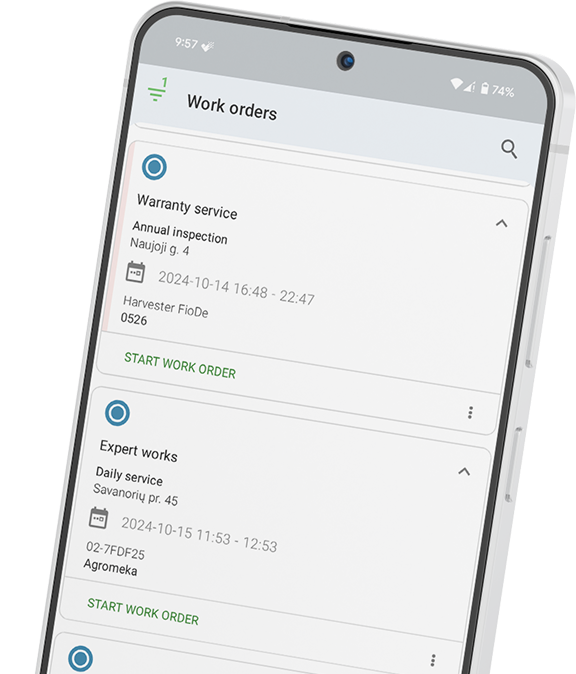Bring simplicity to your field service operations.
Our list of integrations is updated frequently. Explore each integration in its own separate page for more information.
A skid steer loader is a powerful machine that accelerates heavy labour in mines, construction, excavation sites, and other areas that depend on the handling of heavy materials. That being said, the flame that burns twice as bright, and the same rule applies to many heavy equipment tools.
Because skid steer loaders carry massive weights on their lifting arms, abrasive materials are always in contact with the machine and its components.
As a part of high-end industrial machinery, skid steer loaders are not cheap, therefore proper maintenance tasks are necessary to avoid costly repairs and increase working hours. In this guide, we will discuss the importance of a well-built maintenance plan, the recommended frequency of servicing procedures, the average life of main components, and other maintenance tips that will result in reduced downtime.
While there is no universal system that applies to all skid steers, operators and equipment managers must understand the most effective maintenance strategies.
Before initialising any servicing plans, equipment managers and operators run a visual inspection to identify outliers and top-priority servicing needs. After noting alarming damages and unusual handling cases, most businesses run proper maintenance checks and servicing procedures to bring the machine into the best possible condition.
Keeping a skid steer loader with proper skid steer maintenance procedures is much easier when the machine is in top condition before the servicing plan takes effect. For that, skilled technicians start with the most vulnerable and essential components:
Here are the tips and rough estimates that help companies establish clear guidelines and plans for skid steer’s servicing needs.
Daily inspections ensure that skid steers work without limitations on a daily basis. These maintenance tasks start with replenishment of essential fluids, and checking the overall state of components mentioned in the tips section.
On top of regular maintenance checks, preventive maintenance focuses on preventing total equipment failure and saving money on repairs. During a routine equipment check, a skilled technician tracks the wear and tear of main components, making sure that the company finds affordable replacements without risking equipment downtime.
Seasonal maintenance procedures prepare the machine for unique and harsh weather conditions. Working in a dusty environment requires more frequent replacements in the filtering systems, while ensuring proper storage, tire changes, heaters, and lubrication to keep the loader operational in winter during extremely cold weather.
Skid steer maintenance goals are best realised when following a strict maintenance schedule. There is no need to over-complicate things, therefore structuring tasks into checklists with appropriate time intervals will keep your machines in optimal condition.
These are skid steer loader components that require daily servicing and inspections:
Here are the necessary maintenance steps that skilled technicians go over every week:
These tests and servicing tasks require the assistance of skilled technicians and equipment managers. You can also contact the manufacturer for the best possible equipment aid. Here are the less common, but detrimental maintenance steps you’ll see during monthly maintenance:
For those that need to know the expected lifespan of the skid steer and its components, there is no better source than the manufacturer’s recommendations. While the previously mentioned strategy takes care of most servicing needs, knowing which parts are sturdier than others will help you properly distribute maintenance resources. It will keep your machines safe and operational for longer without costing tons of money
Make sure to take all information with a grain of salt, and build many safety nets for your machine. Even if one component shows a longer lifespan, the number may not account for potential extreme weather conditions and the abundance of contaminants in mines, underground structures, and construction sites.
Combining this information will let you adjust your skid steer maintenance checklist, as well as add additional steps to the schedule. Also, tracking the state of the machine and its efficiency in practice will show how far are the recommendations from reality in specific working conditions. After making these adjustments, businesses eventually end up with the most accurate and well-structured plan.
This guide describes the most important factors in finding servicing intervals for your skid steer loader. Use these tips, and compare average numbers with the manufacturer’s recommendations to maximise operating hours for your machines.

Our list of integrations is updated frequently. Explore each integration in its own separate page for more information.

Link copied!